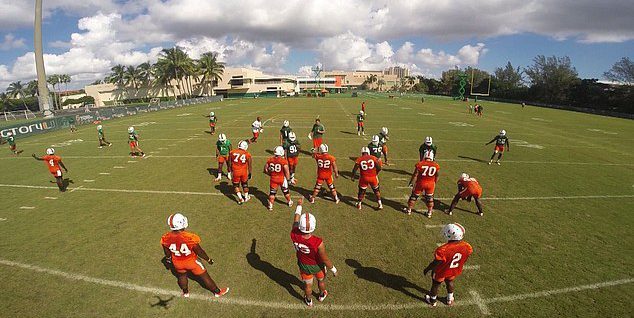How an eye in the sky can help sports coaches
“Managers always see from the sideline, the dugout – a lot of people wonder why managers go up into the stand – it’s because you can get such a better picture tactically where your men are and how things are going.”
Owen has also invested heavily in an aerial visual services company, providing footage for analysis to a number of leading English soccer teams. And the trend isn’t only happening in the UK. Washington-based soccer team the Seattle Sounders have also used drones to monitor tactical progress in training. Take a look at the video below for an example:
Could drones replace the referee?
Many sports tend to be fairly slow in embracing the latest technology, particularly if it means adjusting the flow of the game or moving too far from the status quo. For that reason, it’s unlikely that drones could really referee contests in future. While they may have the physical capability, artificial intelligence is not yet at the point where drones could make judgements and autonomous decisions based on the rules of the game and what they observe in front of them. But anyway, this advert from Pepsi is an interesting glimpse towards how things might be one day:
https://www.youtube.com/watch?v=lX_DLdpygzw
Drones in the media
There have been plenty of fines given to rogue pilots flying over sporting events. But that doesn’t mean that drones don’t have a place in mainstream media coverage. Current regulations and safety concerns are making this difficult at the moment, but away from the football field we’ve already had some good examples of the good and bad that drones can bring.
The bad first. Back in 2015 we got a glimpse of what could go wrong with drones flying high above sporting events. Downhill skiing champion Marcel Hirscher somehow escaped unscathed after a drone carrying a camera fell from the sky during a race. The Austrian was inches away from being seriously injured. This clip is especially dramatic with the French commentary (ooh la la):
But there have certainly been success stories. Filming live events where spectators are packed close to the action remains a concern in the eyes of authorities. But that hasn’t stopped broadcasters from incorporating drone footage into their sports coverage. Fox Sports is one such example, using drones to film segments for a variety of sports known as beauty shots. These flyover videos are often used to set the tone of a location and provide a sense of environment. Previously they were shot with helicopters of blimps, but drones are cheaper and offer more versatility.
Michael Davies, svp of field and technical operations at Fox Sports, points out that “There are some shots that you simply can’t get with conventional means. You can get a lot lower and close to different structures and ground elements with drones.”
“There is a hell of a lot more you can do creatively when you’re not necessarily tasked with covering a sport, which can be more challenging,” said Davies.
Even if drone cameras don’t become the norm with mainstream broadcasters (which they inevitably will), smaller operators will continue to make the most of them. Remember that clip above with Odell Beckham jr? Well, the New York Giants wide receiver also featured in this YouTube video from Soccer AM, which is a good example of how aerial photography can add a different perspective to sports coverage:
Can drones be the sport?
Malek Murison is a freelance writer and editor with a passion for tech trends and innovation. He handles product reviews, major releases and keeps an eye on the enthusiast market for DroneLife.
Email Malek
Twitter:@malekmurison
Subscribe to DroneLife here.
